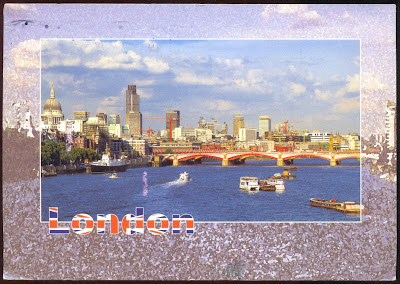Special Post Marke ; 13.03.2008 Le Mont Saint Michel - Point Touristique
Post Marke ; 14.03.2008 50 Le Mont St. Michel - Manche
 30.04.2007 Fauna Barau's Petrel
30.04.2007 Fauna Barau's PetrelFace Value ; 0,86€
Size ; 40 x 30
 f the species has not been studied but it is inferred that they have a 55 days incubation period and take around 100-120 days to fledge a chick. Unlike most burrow nesting procellariids Barau's Petrels begin to return to their colonies diurnally, returning in the late afternoon and riding the thermal updrafts in order to conserve energy. The chicks fledge between November and February.The name commemorates Armand Barau, an agricultural engineer and ornithologist from the French territory of Réunion in the Indian Ocean. It is one of the most recently discovered species of seabird and was only described in 1963, although it was known to local people prior to that.The Barau's Petrel is considered to be an endangered species. It has a highly restricted breeding range and has suffered hunting pressure in the past. While the shooting of the species has now been stopped, and the population seems to have recovered, it is currently threatened by introduced species and light pollution. Young birds, particularly fledglings, are disorientated by artificial lights such as streetlights or the floodlights of sporting venues, which they mistake for bioluminescent squid, and lead them to fail reach the sea. It is estimated that as much as 40% of each breeding season's fledglings get confused in this fashion. Conservation organisations work with local people to catch disorientated chicks and release them back at sea, a program that is thought to rescue most of the lost chicks. Measures are also underway to reduce light pollution by shielding light sources so that they don't attract young birds, a method that has been used to help Newell's Shearwaters in Hawaii.
f the species has not been studied but it is inferred that they have a 55 days incubation period and take around 100-120 days to fledge a chick. Unlike most burrow nesting procellariids Barau's Petrels begin to return to their colonies diurnally, returning in the late afternoon and riding the thermal updrafts in order to conserve energy. The chicks fledge between November and February.The name commemorates Armand Barau, an agricultural engineer and ornithologist from the French territory of Réunion in the Indian Ocean. It is one of the most recently discovered species of seabird and was only described in 1963, although it was known to local people prior to that.The Barau's Petrel is considered to be an endangered species. It has a highly restricted breeding range and has suffered hunting pressure in the past. While the shooting of the species has now been stopped, and the population seems to have recovered, it is currently threatened by introduced species and light pollution. Young birds, particularly fledglings, are disorientated by artificial lights such as streetlights or the floodlights of sporting venues, which they mistake for bioluminescent squid, and lead them to fail reach the sea. It is estimated that as much as 40% of each breeding season's fledglings get confused in this fashion. Conservation organisations work with local people to catch disorientated chicks and release them back at sea, a program that is thought to rescue most of the lost chicks. Measures are also underway to reduce light pollution by shielding light sources so that they don't attract young birds, a method that has been used to help Newell's Shearwaters in Hawaii.







































